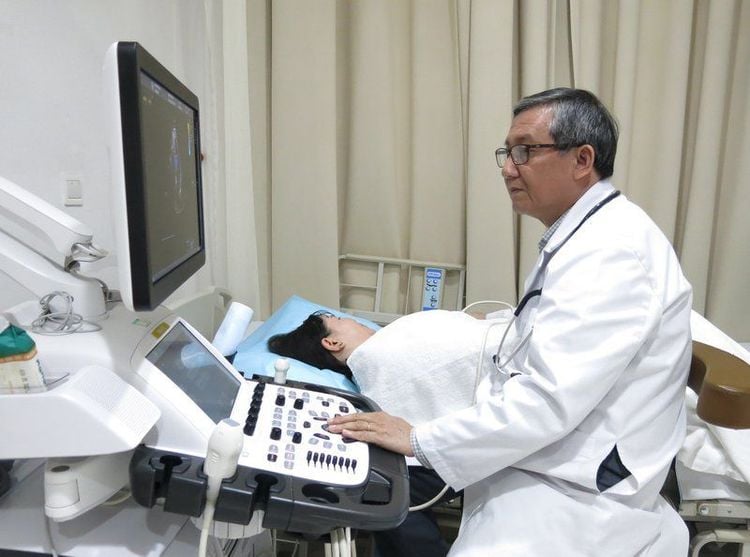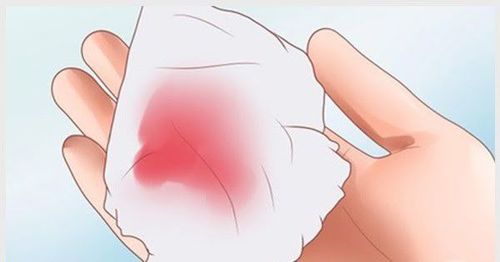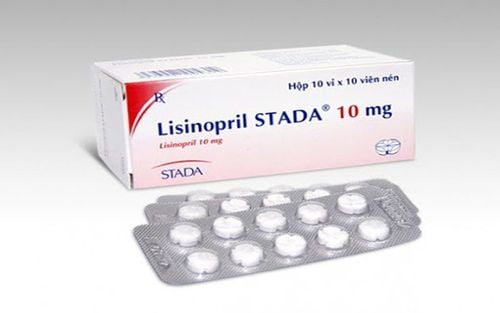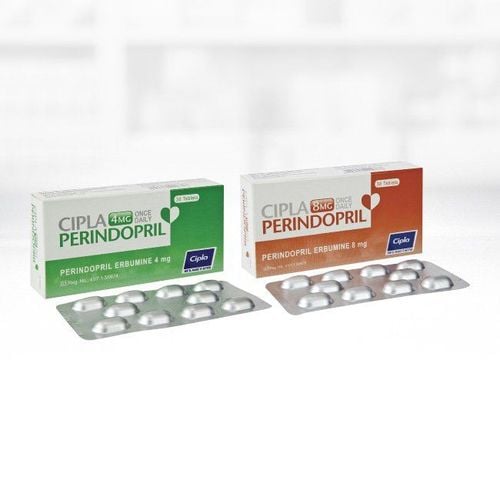This is an automatically translated article.
The aorta is the main conduit of the heart, carrying oxygen-rich blood to the body. Usually, it is shaped like an arch or curve. In an interrupted aortic arch, part of the aorta is missing, leaving a gap.1. What is aortic discontinuity?
The aorta is the main artery that carries blood with oxygen from the heart to the body. In a child with aortic arch disruption, there is a disconnection (disruption) between the top portion of the aortic arch and the lower, descending aorta.The aorta starts from the left ventricle (lower chamber) of the heart as a large vessel and branches into smaller vessels to carry blood to different parts of the body. From the heart, the aorta curves up and then curves around and down. The arteries that supply blood to the head, arms, and other parts of the upper body branch at the top of the arch. The arteries that supply blood to the abdomen, legs, and other parts of the body below branch from the inferior aorta, descending.
An infant can survive with a disconnection in the aorta as long as a blood vessel called the ductus arteriosus remains open. The ductus arteriosus is an alternative route for oxygenated blood to the lower body. This vessel survives in the fetus, but closes for a few hours or days after birth. Once closed, infants with disrupted aortic arch will rapidly become critically ill without medical intervention.
2. Types of disruption of the aorta
There are three types of disruption of the aortic arch, based on the location of the break in the aorta. The three arteries that feed the head, neck, and arms, branching directly from the aortic arch, are, in order: Renewal, left carotid artery, left subclavian artery.Type A: Post-disconnection of the left subclavian artery Type B (most common): Post-disconnection of the left carotid artery Type C (least common): Disconnection is after the renewal artery ( sometimes called brachial artery) Wherever the disconnection occurs, the transport of oxygenated blood to the lower body is compromised, or literally interrupted.
Children with aortic arch disruption almost always have a large ventricular septal defect (VSD), or hole in the wall between the two lower chambers, the pumping chambers of the heart.
3. Problems related to aortic disruption
In patients with a disrupted aorta, oxygen-rich blood from the left side of the heart cannot reach all areas of the body due to a defective aortic arch. Infants with a disrupted aortic arch must depend on an alternative to get enough blood to the lower body.Normally, the fetus has an accessory artery called the ductus arteriosus. The ductus arteriosus is very important for survival in the womb. Shortly after birth, the ductus arteriosus usually closes. If the ductus arteriosus remains open, it is called a patent ductus arteriosus (PDA).
In a child with a disrupted aortic arch, PDA provides an important alternative to adequate blood flow to the lower body.
While the ductus arteriosus is open, the infant may not have noticeable symptoms and may go undiagnosed. However, as the ductus arteriosus begins to close, the infant begins to show signs and symptoms of insufficient blood flow to the area after the interruption. Insufficient blood flow to the body can lead to serious symptoms including shock and congestive heart failure.
If there is a ventricular septal defect, the blood will be redirected (shunted) from the left side to the right side of the heart. This diversion increases blood flow to the lungs, leading to congestive heart failure.
4. Signs and symptoms of aortic dissection

Nhịp tim nhanh là dấu hiệu gián đoạn của động mạch chủ
Rapid or rapid breathing More sleep than usual Tachycardia Difficulty breastfeeding or feeding Unresponsive (baby seems "disliked") Gray skin on the lower body Cool feet Even before these symptoms appear, the doctor may hear a heart murmur (an abnormal heart sound) ). Once symptoms appear, immediate intervention is needed to stabilize the infant's condition.
5. Diagnosis of aortic arch disruption
Diagnosis may require some or all of the following tests:Echocardiogram : Sound waves create images of the heart Electrocardiogram (ECG): Record of the heart's electrical activity Chest X-ray Oxygen measurement pulse: A non-invasive way to monitor blood oxygen levels Cardiac catheterization: A thin tube is inserted into the heart through a vein and/or artery in the leg or through the belly button (“umbilicus”) Cardiac MRI : Hologram shows cardiac abnormalities Sometimes aortic arch disruption is diagnosed on fetal echocardiography or fetal echocardiography.
A large number of children with aortic arch disruption also have an inherited syndrome known as 22q11 deletion syndrome (also known as DiGeorge, myocardial anomalous facial syndrome, or conotruncal). Genetic testing (blood tests) for this syndrome will likely be part of our evaluation.

Siêu âm tim là xét nghiệm được dùng để chẩn đoán gián đoạn động mạch chủ
6. Treatment of Aortic Disruption
The goal of treatment is to stabilize and support the infant until surgical intervention. Such treatment may include:Intubation (intubation or “breathing tube” in the airway) Diuretic therapy (water pills) to help the child pass excess fluid Use of inotropes (to help improve heart pumping) Monitor and correct abnormal blood gases (carbon dioxide and oxygen levels in the blood) and electrolytes (blood potassium and calcium levels) Nutritional management for people with aortic disruption. The goal of surgery is to reconnect the aortic arch to create a continuous "tube" and close the ventricular septal defect. Surgery is usually done urgently but after the baby has stabilized (usually within the first few days after birth). Open heart surgery will be performed to join the two separate parts of the aorta, close the ventricular septal defect, and ligate (join) the ductus arteriosus. Complications following interrupted aortic arch repair may include residual obstruction or stenosis (stenosis) at the site of aortic repair. The aortic valve or the area below the valve is usually small and may not grow, which can lead to narrowing months or years after surgery.
7. Outlook for Aortic Disruption
Due to the great advances in medicine and technology, today most children with heart diseases lead productive lives as adults.Through the age of 18 children born with aortic arch disruption will need lifelong care by a cardiologist. Our pediatric cardiologists follow patients until they are young adults, coordinating care with their primary care physician. Patients will need to carefully follow their doctor's advice, including continuing to take any prescribed medications and, in some cases, limiting exercise.
Some patients will develop related problems as children or adults. Some may have problems with the aortic arch or the aortic valve (which opens and closes to allow blood to flow out of the heart into the aorta) and in the area of the aorta just below the valve. Additional procedures, such as surgery or catheterization, may be required as the child gets older.
In adulthood it is important that children born with aortic arch disruption continue to see a cardiologist, even as they mature.
Pediatrics Department at Vinmec is one of the few multi-specialty hospitals with a full range of doctors specializing in neurology, cardiology, gastroenterology, nutrition, psychology, endocrinology, hepatobiliary, helping to treat quickly and promptly. when diseases are discovered during the examination. As a key area of Vinmec Medical system, Pediatrics Department always brings satisfaction to customers and is highly appreciated by industry experts with:
Gathering a team of leading pediatricians: including leading experts, with high professional qualifications (professors, associate professors, doctorates, masters), experienced, worked at major hospitals such as Bach Mai, 108.. Doctors All of them are well-trained, professional, have a mind - range, and are knowledgeable about young psychology. In addition to domestic pediatric specialists, the Department of Pediatrics also has the participation of foreign experts (Japan, Singapore, Australia, USA) who are always pioneers in applying the latest and most effective treatment regimens. . Comprehensive services: In the field of Pediatrics, Vinmec provides a series of continuous medical examination and treatment services from Newborn to Pediatric and Vaccine, ... according to international standards to help parents take care of their baby's health from birth to childhood. from birth to adulthood Specialized techniques: Vinmec has successfully deployed many specialized techniques to make the treatment of difficult diseases in pediatrics more effective: neurosurgery - skull surgery, stem cell transplantation. blood in cancer treatment. Professional care: In addition to understanding children's psychology, Vinmec also pays special attention to the children's play space, helping them to have fun and get used to the hospital's environment, cooperate in treatment, improve the efficiency of medical treatment.
Please dial HOTLINE for more information or register for an appointment HERE. Download MyVinmec app to make appointments faster and to manage your bookings easily.













